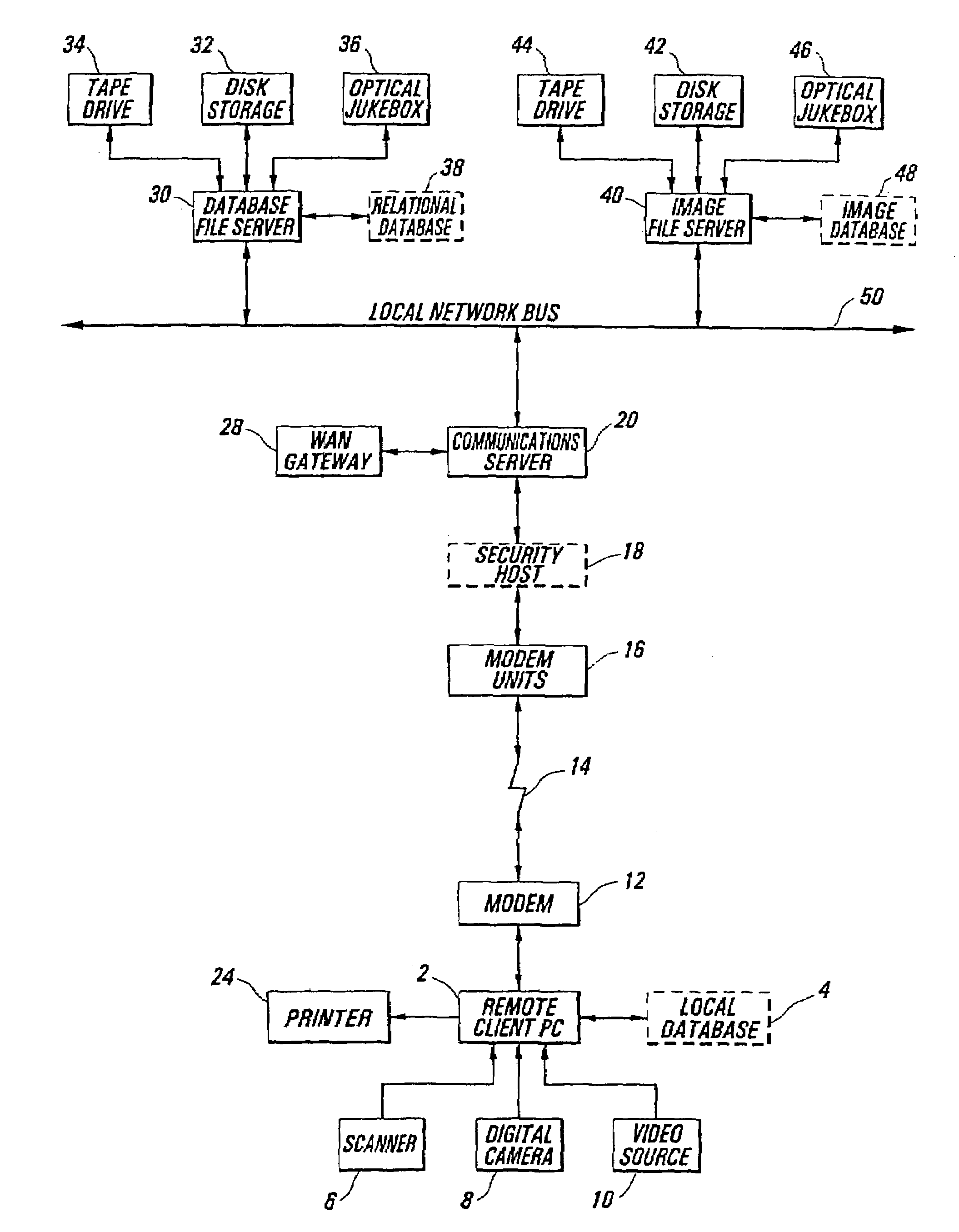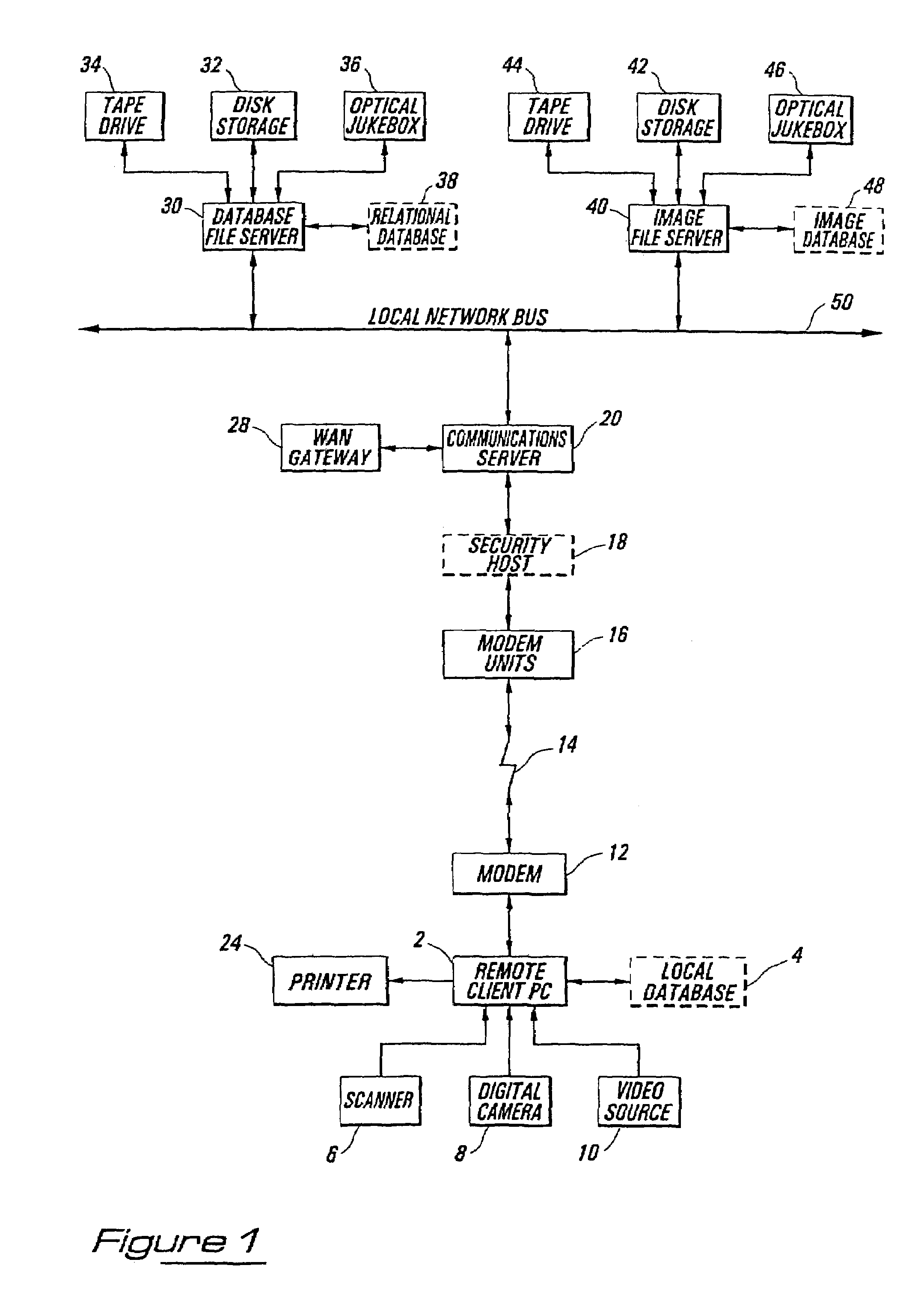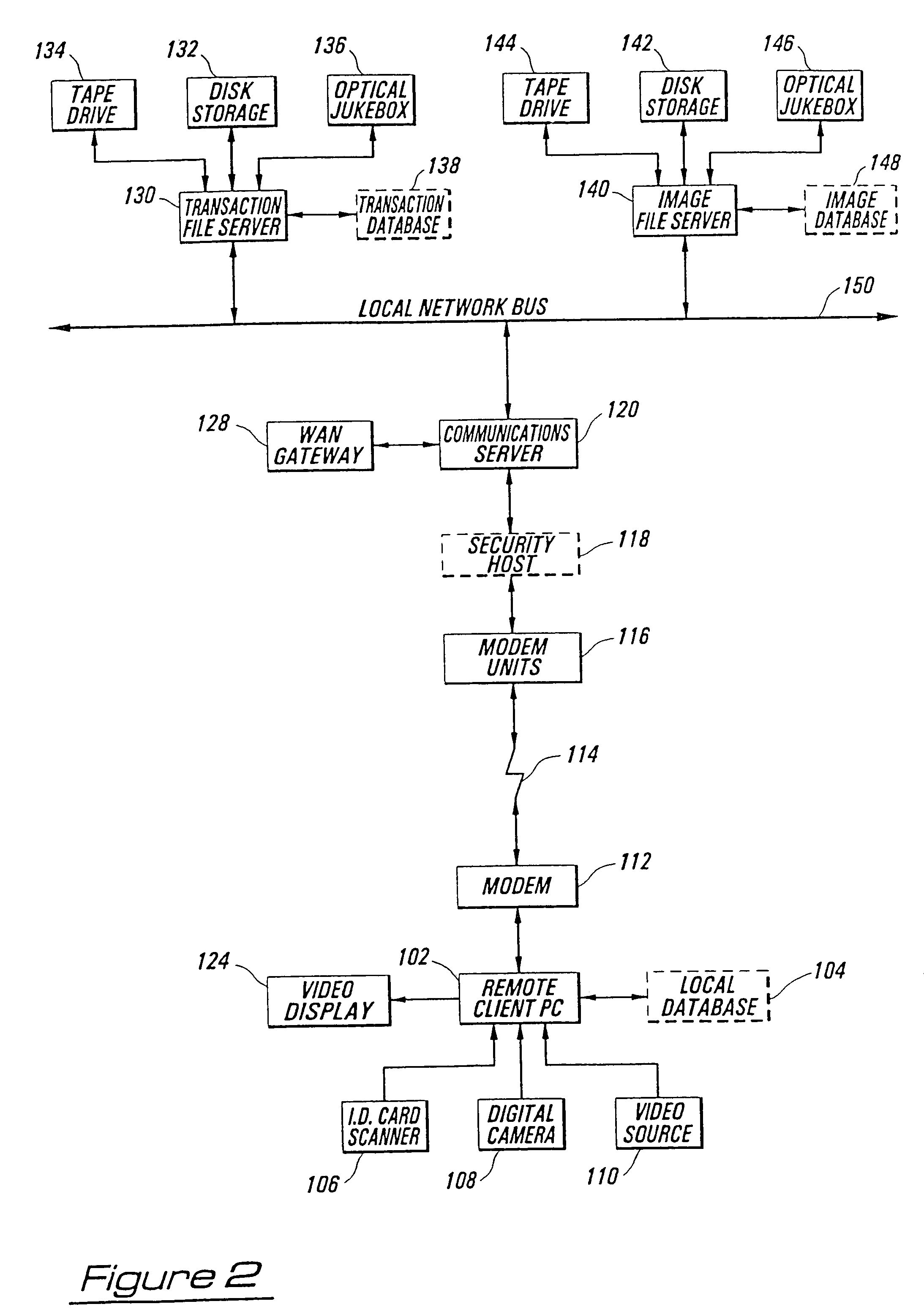Secure identification system
a technology of identification system and security measures, applied in the field of secure identification system, can solve problems such as useless image information, and achieve the effect of ensuring security measures
- Summary
- Abstract
- Description
- Claims
- Application Information
AI Technical Summary
Benefits of technology
Problems solved by technology
Method used
Image
Examples
Embodiment Construction
[0021]The present invention takes advantage of computer networking, computer-based communication, client-server architecture, and relational databases in order to implement a new and unique system for secure identification and communication. Background information is available through the Bijnagte (U.S. Pat. No. 5,235,680) and Sibley, Jr. (U.S. Pat. No. 4,677,552) references, and also through descriptions of computer network operating systems (such as Novell NetWare, UNIX, or Microsoft Windows NT-Server), for communications protocols (such as TCP / IP or IPX), or for communications links (X.25, ATM, ISDN, or T1 / T3 lines).
[0022]For the purpose of this disclosure, it should be understood that the term “item” is intended to refer to any product (new or used), any service, or any person to be listed within the database of this invention, and for which or whom image information is available for display based on a specific request. Broadly, the system may be used in conjunction with individ...
PUM
 Login to View More
Login to View More Abstract
Description
Claims
Application Information
 Login to View More
Login to View More - R&D
- Intellectual Property
- Life Sciences
- Materials
- Tech Scout
- Unparalleled Data Quality
- Higher Quality Content
- 60% Fewer Hallucinations
Browse by: Latest US Patents, China's latest patents, Technical Efficacy Thesaurus, Application Domain, Technology Topic, Popular Technical Reports.
© 2025 PatSnap. All rights reserved.Legal|Privacy policy|Modern Slavery Act Transparency Statement|Sitemap|About US| Contact US: help@patsnap.com



